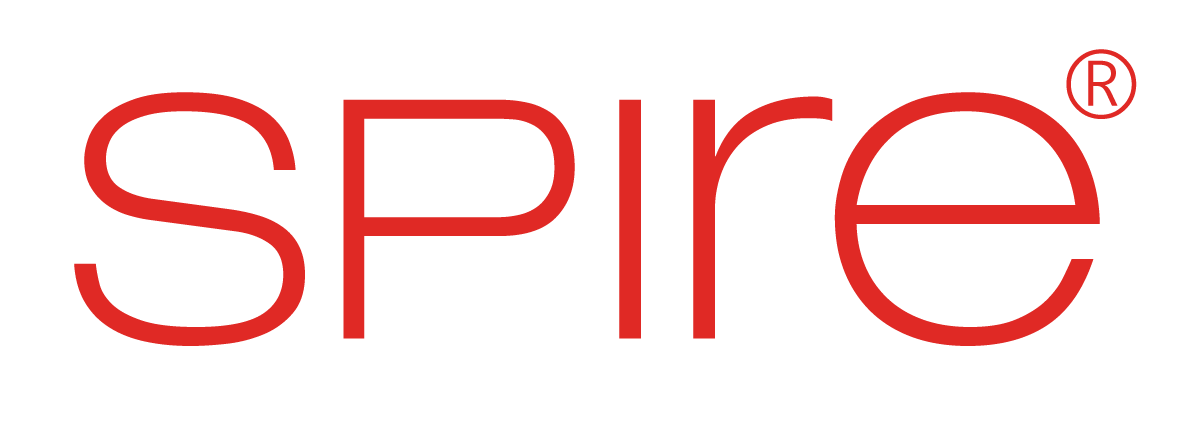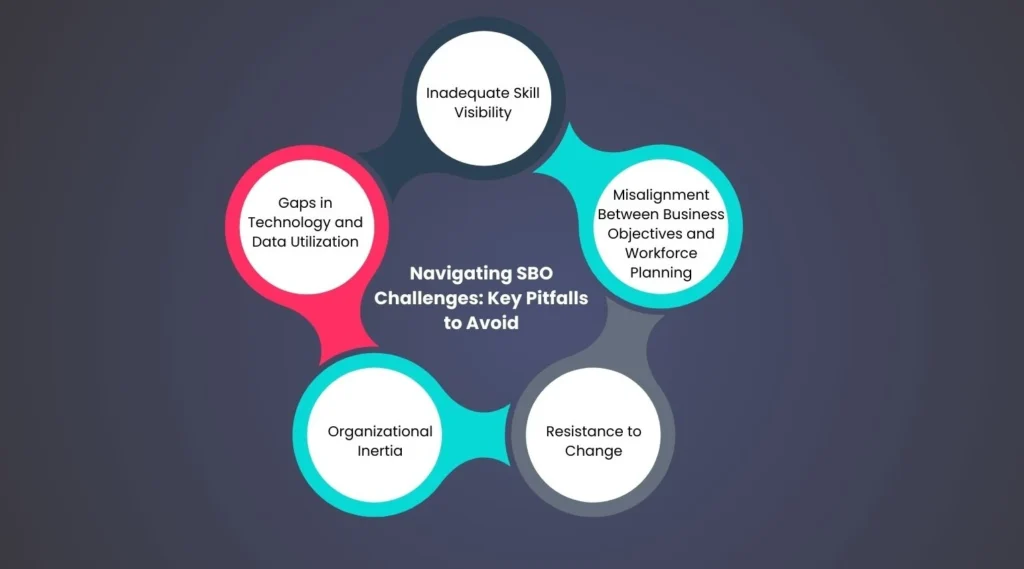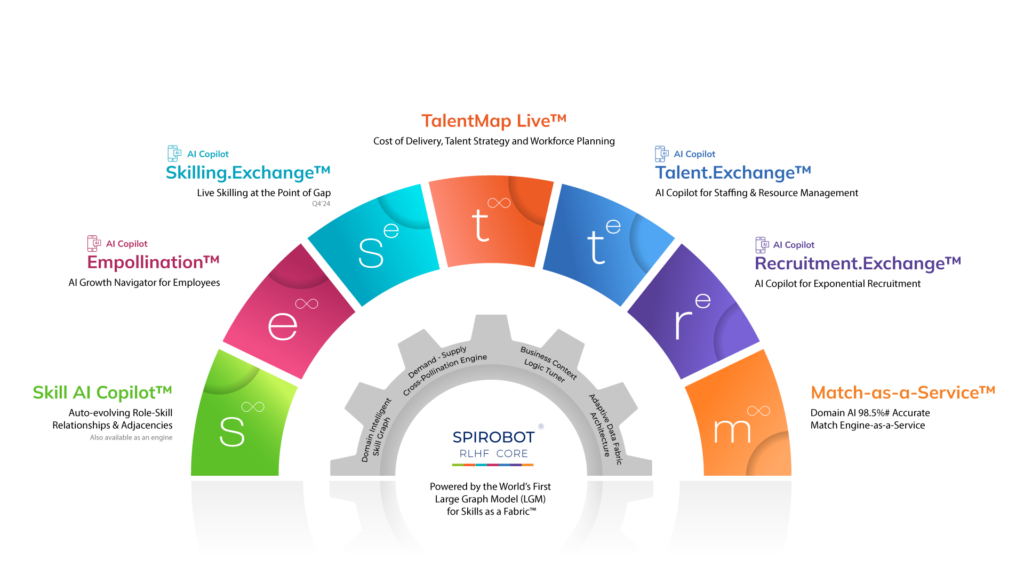The transformation toward skills-based organizations (SBOs) represents a fundamental shift in how businesses approach talent management and organizational design. According to McKinsey research, 87% of executives report skill gaps in their workforce or expect them within a few years. This pressing reality underscores why organizations rapidly move from traditional role-based structures toward more dynamic, skills-based models prioritizing capabilities over job titles.
Sustaining an SBO is no longer just an innovative idea but a pivotal strategy for aligning workforce capabilities with long-term business goals.
The Case for a Skills-Based Organization
The transition to an SBO represents more than a simple restructuring of talent management, it’s a fundamental reimagining of how organizations identify, develop, and deploy capabilities. This transformation acknowledges that traditional job descriptions and role-based structures often create artificial barriers that limit both organizational agility and individual growth potential.
The modern business landscape demands unprecedented levels of adaptability and innovation. SBOs address this need by creating fluid structures where capabilities, rather than job titles, drive opportunity and value creation. This approach enables organizations to respond rapidly to market changes, technological advances, and emerging business opportunities by leveraging their most valuable asset, their people’s capabilities.
Research by Deloitte shows that organizations adopting skills-based practices achieve remarkable improvements across key performance indicators (KPIs).
- 55% faster response to market changes
- 47% improvement in workforce utilization
- 42% reduction in recruitment costs
- 35% higher employee satisfaction scores
These metrics underscore how SBOs excel at both business performance and employee engagement, creating a virtuous cycle of continuous improvement and adaptation.
Why Skills Matter in the Competitive Landscape
Skills have become the primary currency in today’s business environment. Research by Deloitte indicates that organizations with strong skills-based practices are 107% more likely to place talent effectively and 98% better at retaining high-performers. These numbers reflect the tangible impact of prioritizing skills in workforce strategy.
The connection between skills and business performance is particularly evident in innovation cycles. Organizations that maintain detailed skills inventories can assemble project teams much faster than those relying on traditional role-based assignments. This agility translates directly into market advantages, with SBOs reporting shorter time-to-market for new products and services.
Competitive advantage increasingly depends on an organization’s ability to rapidly mobilize the right capabilities at the right time. Traditional role-based structures often mask or underutilize valuable skills, creating inefficiencies that modern organizations cannot afford.
The impact of skills-based approaches manifests in several critical areas.
- Innovation Acceleration: SBOs can form cross-functional teams faster than traditional structures, dramatically reducing time-to-market for new products and services. When companies can quickly identify and combine diverse skill sets, they create fertile ground for innovation and creative problem-solving.
- Market Responsiveness: Organizations with strong skills visibility can pivot operations faster in response to market changes. This agility stems from their ability to quickly assess capability gaps and reallocate resources based on emerging needs.
- Operational Efficiency: SBOs report much lower project delivery costs due to better resource allocation and reduced dependency on external hiring. The ability to precisely match internal capabilities to project requirements eliminates many of the inefficiencies inherent in role-based staffing.
- Talent Development and Retention: Organizations implementing skills-based practices see a significant increase in employee retention and an improvement in internal mobility. These improvements stem from creating clear pathways for skill development and career progression based on capabilities rather than traditional career ladders.
The Evolving Nature of Workforce Dynamics
Digital transformation continues to reshape skill requirements across industries. The World Economic Forum reports that 50% of all employees will need reskilling by 2025, while the half-life of technical skills has dropped to just 2.5 years. This acceleration in skill obsolescence creates an urgent need for organizations to adopt more dynamic approaches to workforce development.
The impact of automation and emerging technologies extends beyond technical roles. Gartner predicts that by 2024, 40% of organizations will deploy AI-enabled skills management solutions to dynamically track and update workforce capabilities. This shift reflects the growing recognition that traditional approaches to workforce planning cannot keep pace with technological change.
Business Outcomes of a Skills-Based Approach
Organizations that successfully implement skills-based strategies report significant improvements across key performance indicators. According to IBM’s research, companies with sophisticated skills management practices achieve higher workforce productivity, lower talent acquisition costs, and higher employee satisfaction scores.
These improvements stem from enhanced talent mobility, allowing organizations to deploy capabilities more effectively across projects and initiatives. Additionally, employees in skills-based organizations demonstrate higher engagement levels, with 28% more likely to report feeling valued for their unique capabilities rather than just their role titles.
Common Pitfalls in Sustaining a Skills-Based Organization
The journey to becoming an SBO is complex and fraught with challenges. While many organizations recognize the value of a skills-based approach, they often stumble in implementation due to deeply ingrained practices and systemic barriers. Understanding these common pitfalls is crucial for developing effective mitigation strategies and ensuring successful transformation.
Inadequate Skill Visibility
The challenge of skill visibility extends far beyond simple tracking issues. Organizations frequently struggle with data fragmentation, dynamic skill evolution, and the complexity of skill relationships.
- Data Fragmentation: Skills information often exists in isolated systems across different departments, creating incomplete and inconsistent views of organizational capabilities. This fragmentation leads to missed opportunities for internal mobility and inefficient resource allocation.
- Dynamic Skill Evolution: Traditional skill tracking methods fail to capture the rapid evolution of capabilities.
- New skills emerge and existing ones transform faster than manual updates can track
- Informal skills and capabilities often go unrecognized
- Self-reported skills lack validation and standardization
- Real-time skill application and development remain invisible
- Complexity of Skill Relationships: Organizations struggle to map the intricate relationships between primary and adjacent skills, and current capabilities and future skill requirements
Misalignment Between Business Objectives and Workforce Planning
When organizations continue to think in terms of roles rather than skills, they often miss critical capability gaps. Research by PwC shows that 79% of CEOs worry about skill availability to support growth strategies, yet only 30% have comprehensive skills inventories aligned with their strategic objectives.
Such misalignment manifests in several critical ways including, resource allocation issues, strategic disconnection, and challenges in capturing skills-based success metrics.
Resistance to Change and Organizational Inertia
Cultural resistance remains a significant barrier to skills-based transformation. A study by MIT Sloan Management Review found that 72% of organizations cite cultural challenges as the primary obstacle to implementing skills-based practices. These challenges often lead to creating cultural barriers, leadership challenges, and process inertia.
- Cultural Barriers: Traditional career paths appear threatened by skills-based progression
- Leadership Challenges: Middle management often lacks tools and training for skills-based talent development
- Process Inertia: Performance management systems remain tied to job descriptions rather than capabilities
Gaps in Technology and Data Utilization
Manual skills tracking and fragmented systems create significant inefficiencies. Organizations using outdated methods spend 3.5 times longer on skills assessment and allocation compared to those leveraging modern AI-powered solutions.
Strategic Alignment: Crucial Steps To Building the Foundation of a Skills-Based Organization
Transforming into an SBO requires a systematic approach that aligns organizational structure, processes, and technology with strategic objectives. This alignment creates the foundation for sustainable change and ensures that investments in skill development directly support business outcomes.
Success depends on the careful orchestration of multiple elements, from leadership commitment to technological infrastructure.
Step 1: Establishing Clear Business Objectives
Successful skills-based transformations begin with a clear alignment between workforce capabilities and strategic goals. Organizations must create a detailed skills inventory mapped directly to business objectives, enabling precise capability development and deployment.
For example, a global technology company working with a Domain-Intelligent AI platform identified critical capability gaps in emerging technologies, leading to a significant reduction in external hiring costs through targeted internal mobility and upskilling programs.
Step 2: Creating a Skills Database
A centralized, AI-powered skills repository forms the backbone of effective skills management. Domain-Intelligent AI solutions can automatically map and update skills profiles, providing real-time visibility into organizational capabilities.
Step 3: Fostering a Culture of Continuous Learning
Leadership commitment to continuous learning drives successful skills-based transformations. Organizations must implement personalized learning pathways supported by Domain-Intelligent AI recommendations, resulting in 3.2 times higher skill acquisition rates compared to traditional training approaches.
From Strategy to Execution: Overcoming Key Challenges
The gap between strategy and execution represents one of the most significant hurdles in establishing a sustainable skills-based organization. Organizations must navigate complex technological, cultural, and operational challenges while maintaining business continuity. Success requires a coordinated approach that leverages modern AI tools and methodologies while addressing human factors.
Addressing Skill Gaps Through Domain-Intelligent AI
Modern AI solutions enable proactive skill gap identification and management. Domain-Intelligent AI can analyze industry trends, internal capability data, and strategic objectives to predict future skill requirements with accuracy.
- Personalizes learning and development pathways by identifying the most efficient paths to close specific skill gaps.
- Predicts gap analysis by analyzing industry trends and internal data to forecast future skill requirements.
- Facilitates real-time skill assessment by continuously updating skill profiles.
Enhancing Talent Mobility
Internal talent marketplaces powered by Domain-Intelligent AI can increase internal mobility rates while reducing time-to-fill positions. These platforms create transparent opportunities for skill development and career progression.
- Jobs matching based on current and adjacent skills.
- Optimize career paths by providing personalized learning recommendations.
Managing Change and Driving Adoption
Successful adoption requires clear communication of benefits and systematic change management. Organizations should implement regular feedback loops and measure progress through key metrics like skills coverage rates and internal mobility statistics.
Leveraging Advanced AI Solutions for Sustaining SBOs
The sustainable success of SBOs increasingly depends on Domain-Intelligent AI solutions that can handle the complexity and scale of modern workforce dynamics. These solutions must go beyond basic skill tracking to provide comprehensive capabilities for skill development, deployment, and evolution.
AI-powered tools, particularly Domain-Intelligent AI and Large Graph Models (LGM) for Skills, represent the cutting edge of skills management technology, offering unprecedented abilities to understand, predict, and optimize workforce capabilities.
Role of Domain-Intelligent AI in Skills Visibility and Management
Domain-Intelligent AI represents a significant advancement in skills management capabilities, offering a nuanced understanding of organizational competencies that go far beyond traditional skills tracking. This framework leverages sophisticated algorithms trained on industry-specific data to create a dynamic and auto-evolving contextual understanding of skills across the organization.
At its core, Domain-Intelligent AI brings three transformative capabilities to skills management.
- Automated Skills Discovery and Mapping: Domain-Intelligent AI continuously analyzes workplace data sources—including project documentation, communications, and work products—to automatically identify and catalog skills as they emerge. This capability ensures organizations maintain accurate, real-time visibility into their skill ecosystem.
- Contextual Skills Understanding: These frameworks understand skills within their business context, recognizing how different capabilities combine and evolve in specific industries. For example, in technology sectors, Domain-Intelligent AI can distinguish between different programming paradigms and understand how they relate to business outcomes, enabling more precise skill deployment and development strategies.
- Intelligent Skills Forecasting: By analyzing industry trends, market signals, and internal data, Domain-Intelligent AI predicts future skill requirements with remarkable accuracy. Organizations using such frameworks report high accuracy in predicting critical organization skills in advance, enabling proactive capability development.
The Value of Learning and Large Graph Models (LGM) for Skills
Learning and LGM for Skills represent a revolutionary approach to understanding and managing organizational skills ecosystems. These sophisticated model maps complex relationships between skills, roles, projects, and business outcomes, creating a multidimensional view of organizational capabilities.
LGMs transform skills management through several key mechanisms.
- Dynamic Skill Relationships: LGM for Skills creates sophisticated maps of skill relationships, showing how different capabilities connect and influence each other. This understanding enables organizations to understand skill clusters that drive specific business outcomes and map optimal learning pathways based on existing capabilities.
- Predictive Learning Pathways: By analyzing successful skill development patterns across large datasets, LGM for Skills can identify prerequisite skills that accelerate learning in specific domains and suggest learning recommendations via videos or online courses.
- Strategic Skill Evolution: LGM for Skills help organizations understand how skills evolve over time by continuously tracking the emergence of new skill combinations.
Optimizing Workforce Planning with Predictive Analytics
Predictive analytics transforms workforce planning from a reactive to a proactive function, enabling organizations to anticipate and prepare for future capability needs. This approach combines multiple data streams to create comprehensive workforce intelligence.
Organizations using AI-powered solutions report lower skill gap risks and improved resource allocation efficiency.
The Competitive Edge: SBOs as a Driver of Innovation
The sustainable success of an SBO increasingly depends on sophisticated AI solutions that can handle the complexity and scale of modern workforce dynamics. These solutions must go beyond basic skill tracking to provide comprehensive capabilities for skill development, deployment, and evolution.
AI-powered solutions like Domain-Intelligent AI and LGM for Skills represent the cutting edge of skills management technology, offering unprecedented abilities to understand, predict, and optimize workforce capabilities.
- Accelerated Innovation Cycles: SBOs achieve faster innovation cycles through mechanisms such as cross-pollination hiring practices.
- Market Responsiveness: An SBO can demonstrate a superior ability to adapt to market changes by quickly aligning their workforce to address new project opportunities.
- Sustainable Innovation Culture: SBOs create self-reinforcing innovation ecosystems via continuous learning and structured skill development aligned with the organization’s strategic goals.
In Conclusion
Sustaining a skills-based organization represents both a critical challenge and an unprecedented opportunity. Organizations that successfully navigate this transformation using AI-powered solutions like Domain-Intelligent AI and LGM for Skills gain significant competitive advantages in talent development, innovation, and market responsiveness.
The time to act is now. Organizations must embrace skills-based transformation supported by advanced AI solutions to build resilient and future-ready workforces. Those who delay risk falling behind in an increasingly competitive landscape where skills, not roles, determine success.







